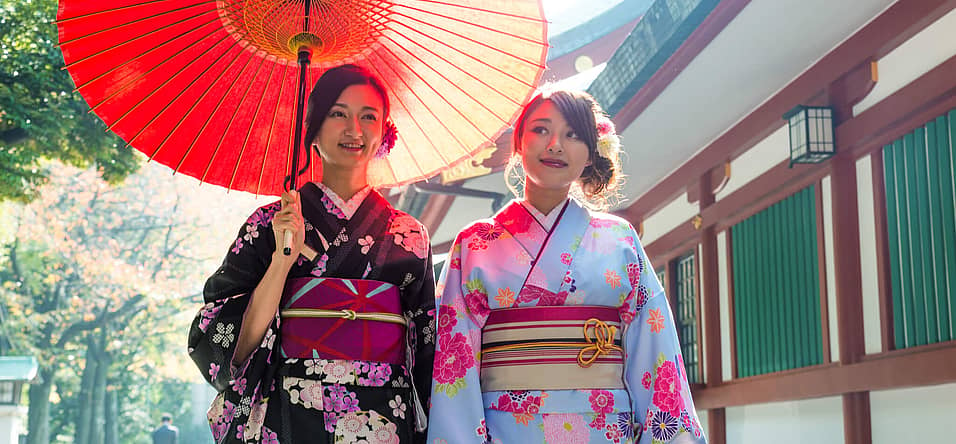
Japanese Culture Day
A rich tapestry of traditions, art, and philosophy, weaving together ancient wisdom and contemporary vibrancy in daily life.
Join in on the fun and enjoy both ancient and modern aspects of this Asian culture by paying homage through Japanese Culture Day. From parades and festivals in the community to events that honor those who have made contributions to the cultural heritage, this day offers a wide range of reasons to celebrate!
History of Japanese Culture Day
This public holiday, held in the country of Japan, is also known as “Bunka no Hi”, or simply “Culture Day”. The idea behind the event is simply to show honor and respect for the various ways that the Japanese culture has influence over life, including through the arts and music, as well as academic endeavors.
The history of Japanese Culture Day can be traced back to 1948 when the day was first celebrated following World War II. Specifically, the date relates to the announcement of Japan’s postwar constitution, which took place on November 3, 1946. But even though this was an important day, its history can actually be followed back much further.
It was in 1868 that November 3 first became a public holiday in Japan, in honor of the birthday of the leader reigning at the time, Emperor Meiji. Following the emperor’s death in 1912, this date was not celebrated as a holiday for a time until 1927, when it was again specifically associated with the former emperor, calling it Meiji-setsu.
After its start in 1948, Japanese Culture Day overrode the previous reasons for celebrating and then simply chose to showcase the wide range of elements and fascinating aspects that the Japanese culture has to offer.
Today, Japanese Culture Day coincides with Education and Culture Week, which is celebrated in the country during the first week of November. Although Culture Day is technically celebrated on the 3rd of the month, the festivities often carry on for several days. Parades and festivals drawing attention to traditional Japanese costumes and clothing are often part of the celebrations.
In addition, many people take this time to visit museums and cultural centers, which are typically free on this day. Also, various award ceremonies for cultural contributions and educational achievements often take place to coincide with Japanese Culture Day.
How to Celebrate Japanese Culture Day
Find some incredible ways to celebrate and enjoy Japanese Culture Day, getting started with some of these fun ideas:
Attend Japanese Culture Day Events
One of the most delightful ways to celebrate this day would be to get involved with some local events that are enjoyable and showing appreciation for the culture that comes from the islands of Japan. Whether making a trip to visit Japan during this time, or finding a local Japanese community abroad to celebrate with, Japanese Culture Day is a perfect time to learn and celebrate the various amazing aspects of this distinctive people and place.
View Some Japanese Art
Japan is known for its attention to beauty in the arts. The visual arts by Japanese artists are particularly unique and Japanese Culture Day would be the perfect time to get more familiar with some of the country’s most famous artists! Of course, visiting their work in a museum would obviously offer the best viewpoint, but getting online access or checking out a book from the library would still be a reasonable way to learn more.
While it’s hard to narrow them down, get started with some of these Japanese artists and then see where the trail ends up:
- Takashi Murakami. This unique modern artist focuses on Japanese printmaking techniques as well as colorful works and even manga.
- Katsushika Hokusai. Block wood and artist’s paint make up the paintings of this inspiring artist from the 1700s.
- Sesshu Toyo. This ink painter from the 1400s is highly regarded not only in Japan, but also in China, where ink painting originated.
Learn Facts About Japanese Culture
One excellent way for those who are not Japanese to celebrate this day might be to learn a bit more and grow in knowledge about the culture, costumes, art, music, religion and more. Consider learning about and sharing some of these interesting cultural features to get started:
-
Japan has a large number of people who participate in Shinto religious ceremonies as well as many claiming Buddhism. Because these two have been mixed for hundreds of years, the shrines and temples are often combined in a mix called shinbutsu.
-
In the 7th century, Buddhists passed laws forbidding eating meat, and this taboo remained commonplace for hundreds of years, until the 19th century.
-
Within Japanese culture, an important way to show respect is to bow, whether a large bow to a highly respected person or something more akin to a small nod for a neighborhood store clerk.
-
Kimonos are the national dress for Japan and it has been the tradition for them to be worn by both women and men for more than 1000 years, and these are more than just robes but they are often considered to be a piece of artwork.





